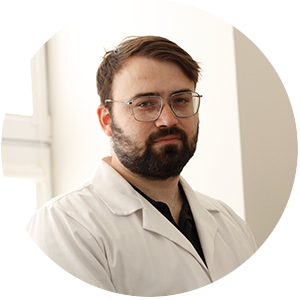NSC PRELUDIUM and OPUS GRANTS for MUL RESEARCHERS
The laureates of National Science Centre PRELUDIUM 20 and OPUS 21 calls have been announced. 7 projects by the researchers of the Medical University of Lodz have received the funds under the calls.
Heartfelt congratulations!
| No | Project manager | Project title | The NSC call | Funds | Implementation period (months) | Faculty |
| 1. | Małgorzata Znyk MA
Supervised by: prof. Dorota Kaleta |
The use of heated tobacco products and the health status of young adults in Poland | PRELUDIUM 20 | PLN 208 818,00 | 36 | Faculty of Health Sciences |
| 2. | Kinga Urbanek MA
Supervised by: prof. Agnieszka Piastowska-Ciesielska |
Oestrogenic mycotoxins (UAE, α-ZOL) and tumor progression: an in vitro model of obesity and breast cancer | PRELUDIUM 20 | 210 000,00 zł | 36 | Faculty of Medicine |
| 3. | mgr Mateusz Gawrysiak MA
Supervised by: Maciej Chałubiński, MD PhD MUL prof. |
The role of rhinovirus in the limitation of infection of the human lung endothelium with low pathogenic coronavirus in the immunopathology of viral respiratory infections | PRELUDIUM 20 | 139 995,00 zł | 24 | Faculty of Medicine |
| 4. | Żaneta Kałuzińska MA
Supervised by: Elżbieta Płuciennik, MD PhD MUL prof. |
WWOX gene as a modulator of the structure and function of the cytoskeleton and intercellular communication in glioma | PRELUDIUM 20 | 210 000,00 zł | 36 | Faculty of Medicine |
| 5. | Doctor Filip Karuga
Supervised by: Agata Gabryelska MD PhD |
The role of hypoxia-sensitive miRNA181a, miRNA199a and SIRT1 in diabetes mellitus development in obstructive sleep apnea patients. | PRELUDIUM 20 | 210 000,00 zł | 36 | Faculty of Medicine |
| 6. | DoctorGrzegorz Kardas
Supervised by: Michał Panek, MD PhD MUL prof. |
Pleiotropic effects of modern biological therapies of severe asthma in terms of mediation of alarmins (IL-25, IL-33, TSLP), and soluble ST2 receptor levels and airway remodelling | PRELUDIUM 20 | 210 000,00 zł | 36 | Faculty of Medicine |
| 7. | Prof. Kinga Daria Polańska MD PhD (Polish Mother’s Memorial Hospital)
MUL researcher: Joanna Jerzyńska, MD PhD MUL prof. |
Polish Mother-Child Cohort – potential for assessing exposure, health and neurobehavioral development during puberty | OPUS 21 | Faculty of Medicine (project implemented in consortium with Nofer Institute of Occupational Medicine) |
mgr Małgorzata Znyk
Używanie tytoniu podgrzewanego a stan zdrowia młodych osób w Polsce
W ostatnich latach obserwuje się wzrost liczby młodych osób sięgających po podgrzewane wyroby tytoniowe. Osoby te ,,podążają za modą”, ale chcą także używać ,,bezpiecznego papierosa”. Nie eliminuje to jednak ryzyka rozwoju chorób związanych z tytoniem. IQOS (I-Quit-Ordinary-Smoking) może być produktem wstępnym do użycia tytoniu wśród osób nigdy nie palących, ludzi młodych.
Celem proponowanego badania będzie ocena wpływu narażenia na podgrzewany tytoń wśród młodych osób (w wieku 18-30 lat) na stan zdrowia, przy zastosowaniu wybranych parametrów/ biomarkerów oceny stanu zdrowia. Zaletą proponowanego projektu jest także ocena stężenia kotyniny w ślinie, która weryfikuje narażenie na dym tytoniowy z podgrzewanych urządzeń tytoniowych. Kompleksowa analiza przeprowadzonego wywiadu, testów laboratoryjnych i oceny wybranych biomarkerów zdrowia pozwoli na opracowanie rekomendacji profilaktycznych dotyczących wpływu stosowania podgrzewanych wyrobów tytoniowych (IQOS) na stan zdrowia młodych ludzi w Polsce. Przedłożony projekt jest oryginalną pracą badawczą (tego typu badań nie były w Polsce prowadzone, a na świecie pojedyncze badania podejmują tę tematykę).
Kinga Urbanek MA
Oestrogenic mycotoxins (UAE, α-ZOL) and tumour progression: an in vitro model of obesity and breast cancer
Recent research has reinforced the notion that obesity is a risk factor of breast cancer in post-menopausal women. Zearalenone (ZEA) is one of the most common oestrogenic mycotoxins produced by Fusarium species. The aim of the project is to assess a potential role of mycotoxins in chronic, systemic obesity-induced inflammation and the related cancer progression by means of in vitro model and pre-clinical models of obesity and post-menopausal breast cancer.
In the course of the research we will evaluate the influence of oestrogenic mycotoxins: ZEA and its derivative α-ZOL and a high-fat diet on cell proliferation and invasion particularly with regard to molecular pathways involved in inflammation and neoplasia. Moreover, we will assess whether the ZEA and α-ZOL may affect the spread of breast cancer in postmenopausal people with concomitant obesity in an in vitro model.
Mateusz Gawrysiak MA
The role of rhinovirus in the limitation of infection of the human lung endothelium with low pathogenic coronavirus in the immunopathology of viral respiratory infections
Rhinoviruses (HRVs) and coronaviruses (HCoV) can pose a serious threat to patients with chronic respiratory diseases, as, among others they exacerbate asthma symptoms. Research shows that after the infection of pulmonary vascular endothelium, rhinovirus HRV16 activates a severe and rapid antiviral response. The mechanisms of antiviral intracellular immunity get enhanced and the following enzymes are expressed: oligoadenylate synthetase (OAS-1) and protein kinase R (PKR), and these are responsible for the inhibition of viral replication.
The major aim of the project is to evaluate whether HRV may diminish the coronavirus infection of pulmonary endothelium via the abovementioned mechanisms. We believe that the dynamic antiviral response in the primary HRV infection may protect the endothelium against HCoV229E infection. Our deeper understanding of the viral endothelial infection can provide opportunities for therapies based on the activation of antiviral intracellular machinery towards prevention of exacerbated respiratory diseases caused by viruses.
Mgr Żaneta Kałuzińska
WWOX gene as a modulator of the structure and function of the cytoskeleton and intercellular communication in glioma
WWOX gene is one of atypical suppressor genes whose function is yet to be fully clarified in glioblastoma multiforme, especially at the molecular level. The available studies show that its expression is reduced when compared to normal tissue or tissues of a low grade malignancy. Preliminary results based on bioinformatic analysis of disease recurrence risk assessment, as well as survival, indicate a lower risk of the disease recurrence and a longer survival at a higher level of the analysed gene. The outcomes obtained in in vitro tests also show that elevated WWOX expression has an inhibitory impact on the investigated tumour growth.
The project involves a global analysis of gene expression at the level of transcriptome and promoterome as well as biological tests in research models aimed at the evaluation of migration through the basement membrane, proliferation, apoptosis and cytoskeletal rearrangement. Additionally, the analysis of WWOX protein co-localisation with the proteins selected on the basis of sequencing results should enable us to understand their interactions in specific cell compartments.
Doctor Filip Karuga
The role of hypoxia-sensitive miRNA181a, miRNA199a and SIRT1 in diabetes mellitus development in obstructive sleep apnea patients.
Sleep disturbances have become an increasingly serious health issue, especially in highly-developed societies including Poland. Obstructive sleep apnea (OSA) is one of the most common sleep disorders. It is characterised by recurrent episodes of upper airway collapse during sleep, which can lead to hypoxia, arousal from sleep or sleep fragmentation. Moreover, OSA is an independent risk factor of cardiovascular diseases and diseases related to glucose metabolism. Diabetes mellitus is developed in as many as 30% of OSA patients.
MicroRNA are tiny RNA particles which are meant to inhibit or activate certain genes. Previous research showed that some microRNAs alter their expression in OSA patients. Furthermore, some of them (miRNA181a, miRNA199a) also affect the expression of SIRT1 which impacts insulin secretion and insulin sensitivity. The aim of the project is to assess the interaction between hypoxia-sensitive microRNAs and SIRT1 and to understand their role in diabetes mellitus development in OSA patients.
The project shall be implemented at the Department of Sleep Medicine and Metabolic Disorders.
Doctor Grzegorz Kardas
Pleiotropic effects of modern biological therapies of severe asthma in terms of mediation of alarmins (IL-25, IL-33, TSLP), and soluble ST2 receptor levels and airway remodelling
Asthma is one of the most common chronic respiratory diseases. The response of the immune system plays a key role in the pathogenesis of asthma. Internal and external stimuli cause the immune cells to release a range of signalling particles (cytokines) which are responsible for the inflammatory response in the bronchi, which underlies the pathogenesis of asthma. The cytokines which are considered as particularly significant, and which are being widely investigated, include so called alarmins i.e. the particles released by i.a. the epithelial cells of the respiratory tract triggered by an external stimulus and leading to the further development of inflammation in the bronchi. This results in a chronic inflammation which produces asthma symptoms from the bronchi. The consequences include the process of bronchial remodelling i.e. gradual rebuilding of the airway composition and structure. The long-term consequences involve a permanent pulmonary function limitation and reduced response to drugs. What prevails in asthma treatment is inhalants: β2-agonists which cause dilation of bronchial passages and glucocorticosteroids which reduce local inflammation. The most severe cases can now benefit from modern methods of asthma treatment i.e. biological drugs – monoclonal antibodies which block key cytokines in the pathogenesis of asthma. The available literature provides only scarce and incomplete data on the impact of biological treatment of severe asthma with omalizumab, mepolizumab or benralizumab on the levels of key inflammatory cytokines such as alarmins, as well as on their influence on airway remodelling.
This project is an attempt to answer the question whether, apart from their already proven impact on the course of asthma, modern biological medication applied in severe asthma (omalizumab, mepolizumab or benralizumab) also produce other (pleiotropic) effects in terms of mediation of alarmins (IL-25, IL-33, TSLP), and soluble IL-33 – sST2 receptor levels and airway remodelling.
Joanna Jerzyńska, MD PhD MUL prof.
Polish Mother-Child Cohort – a potential for the assessment of the exposure, health and neurobehavioral development during puberty
The aim of The Polish Mother and Child Cohort Study (REPRO_PL), established in 2007, is to evaluate different environmental factors during pregnancy and, after birth, on the pregnancy outcome, children’s health and neurodevelopment. The project will assess the impact of exposure to environmental factors on the risk of cardiometabolic, respiratory and neurobehavioral diseases. The project involves Phase IV of the cohort and a health check of 400 adolescents. The following will be evaluated: exposure to phthalates, bisphenols, heavy metals, tobacco smoke components, air pollution, diet, physical activity, the use of new technology devices, hormonal balance, allergies, posture defects, behaviour and intellectual potential.
The project provides a unique opportunity to continue REPRO_PL cohort study, which will facilitate a comprehensive analysis of the impact that environmental factors have on health and will enable further international collaboration to fully use the publication and application potential.
The obtained results will constitute the basis for the development of legislative and intervention measures aimed at improving the health status of the population.













